One of the more recent arrivals to Australian shores in the analogue space is the Titanic Audio’s line of cartridges and analogue accessories from Ireland. The company’s main core products are a new range of Moving Coil cartridges which have been a welcomed addition to the product selection available to Australian vinyl lovers. With a nod to the rich history of ship construction in Belfast, Titanic Audio have produced cartridges with ship-like profiles, complete with portholes, lines and machine cut body art. This review explores the sound and construction of the Titanic Audio Model A Moving Coil (MC) cartridge which has a medium voltage output, features cutting edge construction and an unusual conical shaped stylus.
In the Yard
The Titanic Audio product offering consists of three made-in-Belfast models, with the top of the line being a low output MC with a micro-ridge stylus on a boron cantilever. This is called the Model G and features a gold finished aircraft grade aluminium body. Second from the top is the Model S which is a medium output MC with an elliptical nude stylus mounted on an aluminium cantilever. A Silver finish is used over the aircraft grade aluminium body. I’m here to tackle the entry point in the Titanic Audio line-up – as stated above, it’s the very promising Model A Moving Coil medium output cartridge.
Entirely manufactured in Belfast, the ship shaped cartridge range from Titanic Audio provides yet another option for discerning turntable users. One of Titanic Audio’s philosophies is stated as, “Musicality is at the heart of all our models, we are focused on creating a product that not only produces high accuracy but more importantly an incredible musical experience which can be enjoyed for hours on end without fatigue.”
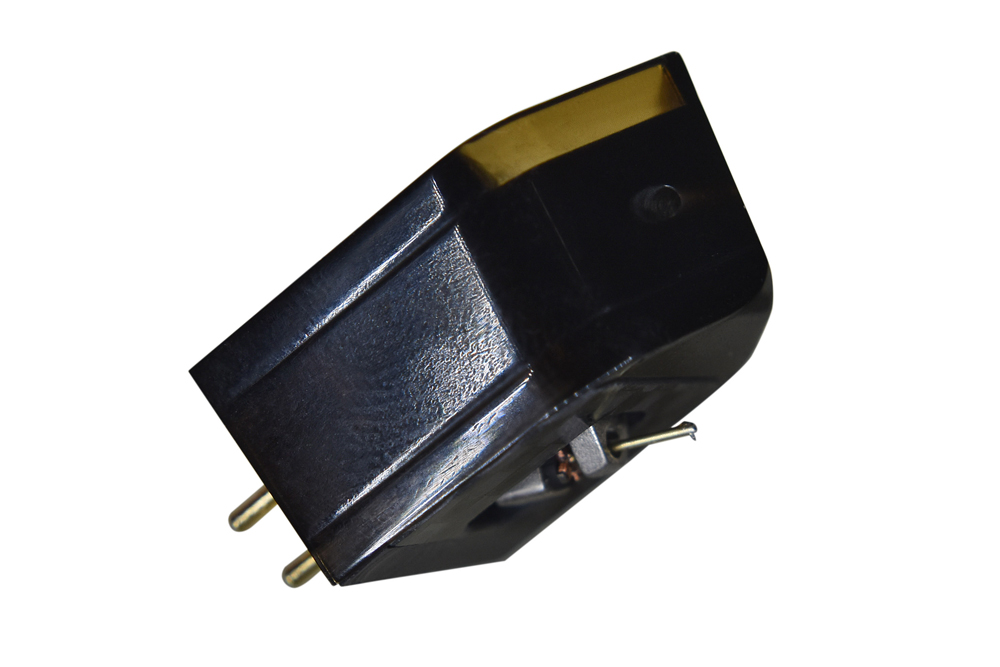
Titanic Audio is an offshoot of Titan Audio which began research and manufacturing audio cables and power distribution blocks in 2016. Using the research facilities available from Queen's University Belfast and Northern Ireland Science Park, Titan Audio explored the use of bespoke-manufactured single crystal copper wire to lower the resistance of the power cable for improved signal integrity. A few years later the first cartridge of the range was developed with help from a Japanese company, supplier of specialised machinery, which could produce very thin strands of OCC copper suitable for windings on Moving Coil cartridges. The Model S was the first cartridge released under the name of Titanic Audio.
The Model A cartridge is Titanic Audio’s entry point in the three cartridge line-up currently available. It features most of the technology found in the top tier cartridges, the Model S and the Model G. The Titanic Audio Model A arrives in a larger than normal six sided clear and black acrylic box, which would not look out of place in a jeweller’s shop window. The Model A cartridge is held aloft inside the box as if it was, indeed, a piece of jewellery. Accessories include a small circular bubble level, two stainless steel cartridge screws and the appropriately sized Allen key.
The Model A uses construction materials and shapes which are unique to Titanic Audio. The ‘engine’ part of the cartridge which contains the coil, damper, cantilever and stylus, is mounted in a carbon fibre monocoque frame. The frame also houses the four output pins and threaded bolt holes. The carbon fibre has extremely good self-damping properties as well as great structural strength and stiffness making it an ideal platform for mounting the ‘engine’.
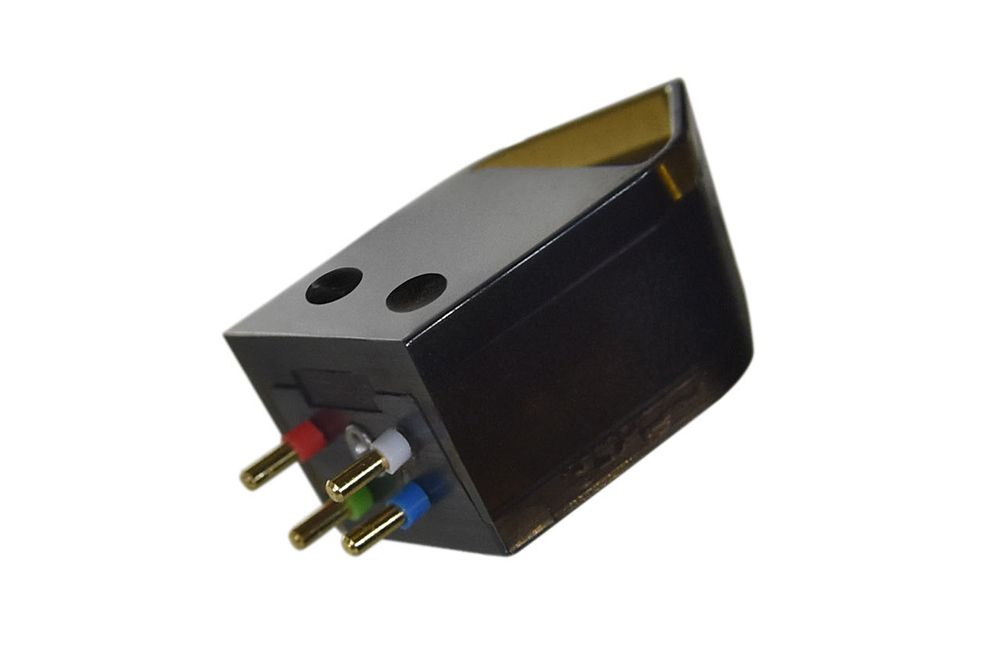
Encapsulating the carbon fibre frame is the CNC machined black coloured acrylic body which is shaped like a miniature ship including the prow and stern. Machined into the top front is a triangular recess with radiuses on the wall and floor junctions. Radii strengthen the shape and allows for better damping control. On the floor of the recess is a machine cut serial number. At the prow of the Model A are two ‘Hawes Holes’ and three incised horizontal lines along the body add to the overall nautical theme.
Back to the ‘engine’ which uses OCC copper windings with individual wire diameters of 0.024 mm (a strand of hair is typically between 0.04 and 0.06 mm!) which produces a medium output of 0.34 mV. Alnico magnets are used to provide the field. A special damper consisting of a 3D printed thermoplastic with high elasticity and high strength is used to allow for fast changes of stylus direction. Further information about the damper is included at the end of this review with questions answered from Gary Campbell, Managing Director of DGR Group who also owns and runs the Titanic and Titan Audio Range.
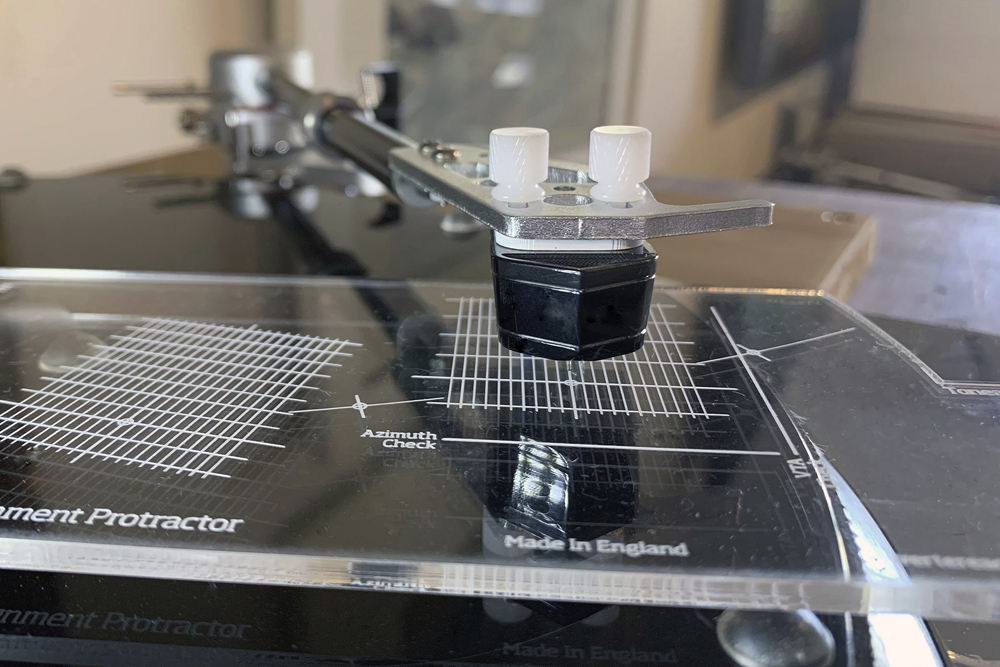
An aluminium cantilever sports a bonded conical stylus. The conical stylus, while being one of the simplest shapes, does require less careful setup. Accurate alignment using an arc tractor sets the Model A at the effective length, in this case 240 mm. Alignment with the cantilever on the two-position protractor offers no concern over zenith readings as the shape of the cone is constant around the circumference. The azimuth can be set using a test record with appropriate tracks and a crosstalk reader such as a Fozgometer. VTA with the Model A body parallel means the recommended midrange tracking force is set at 1.8 gms.
The Model A’s physical attributes are listed as follows: the cantilever features an aluminium tube, the stylus is a “Conical Jointed-Diamond” while the body is shaped from CNC machined black acrylic. Specifications are 10 ohms for Resistance, Load Impedance <100 ohms, 0.35mV/1kHz for output, Frequency Response is 20 Hz to 20 kHz +/- 1dB while Channel Separation >25dB.
I sought out Titanic Audio for some clarity regarding the cartridge’s design and engineering breakthroughs. I started off by asking Gary Campbell about what makes the cartridge’s wire special…
The cabling we use in our cartridges comes directly from our research in power products. We use a single crystal copper cable for the coil windings which is designed to lower the resistance and therefore giving increased dynamics.
You use a carbon fibre frame for carrying the cartridge “engine “, what benefits do you feel this adds to the sound and the ability to construct?
The carbon fibre design works like a monocoque chassis in a sports car, the body of the cartridge is mounted to the carbon frame which gives rigidity to the connection at the headshell. Although the body of a cartridge is often thought of as a dust cover and for aesthetics it actually serves a huge purpose in dampening parasitic vibrations, so this was one of the reasons we CNC’d the entire body from one solid piece.
I was curious as to when the company started the work on designing its cartridge range and which model came first…
Our engineers have been designing and testing multiple products over the years but the first proper R&D instalment came in 2019 while we were working with a Japanese company who supplied us with copper material. They had developed a machine that was able to produce OCC copper in extremely thin strands which could be used for transformers/chokes and even small enough for something like a phono cartridge. The Model S was the first variation we made before experimenting with making less and more expensive models using different material types.
Are you able to give a little more insight into the special suspension you use which allows for greater tracking and clarity?
The suspension system we use is very similar to most in the industry, however, it’s the material choice we use that is different. Generally, a rubber type material is used around the cantilever to work as a dampener, this is normally some form of silicone type. We use a 3D printed FDM TPU-ESD which is an engineering grade thermoplastic which protects against electrostatic discharge. This material has a tensile elongation of 100-250% meaning it is extremely flexible but a tensile modulus of 90 MPa meaning it’s extremely strong as well as impact resistant so it works great as a dampening material.
I see you offer retipping as a service, does this include the Model A and how much does this cost?
There isn’t a base price for this service as such, the option is available and is based on the condition of the overall assembly, sometimes a simple retipping can be performed and other times a full rebuild is needed depending on the condition of the coils, cantilever or even suspension. As cartridges are a moving part product, the parts can, and do, wear over time so often by the time a cartridge gets 1000 hours you find that more than just retipping needs to be done as the suspension may have loosened over time or even things like the enamel on the coils tarnishing if the environment is humid.
Hoist the Gaff for Sail
So how does it sound? Well, it is bold, bouncy and musical with plenty of gusto signalling the effectiveness of the special damper. It handles sharp sounding tracks with grace and fluidity and has little to no listening fatigue issues.
Listening began with Paul Simon’s Graceland with track one “The Boy In The Bubble” and I was immediately met with a big sound with great width and height. Mid-band projection is strong which lends itself to this rich recording. Drums come across with strong dynamics only losing out on some of the fine definitions of more exotic stylus shapes. Paul Simon’s vocals came out strong and central complete with subtle studio echo effects. Backing vocals had a sweetness to them which reminded me of the warm sound of vinyl that is so beguiling.
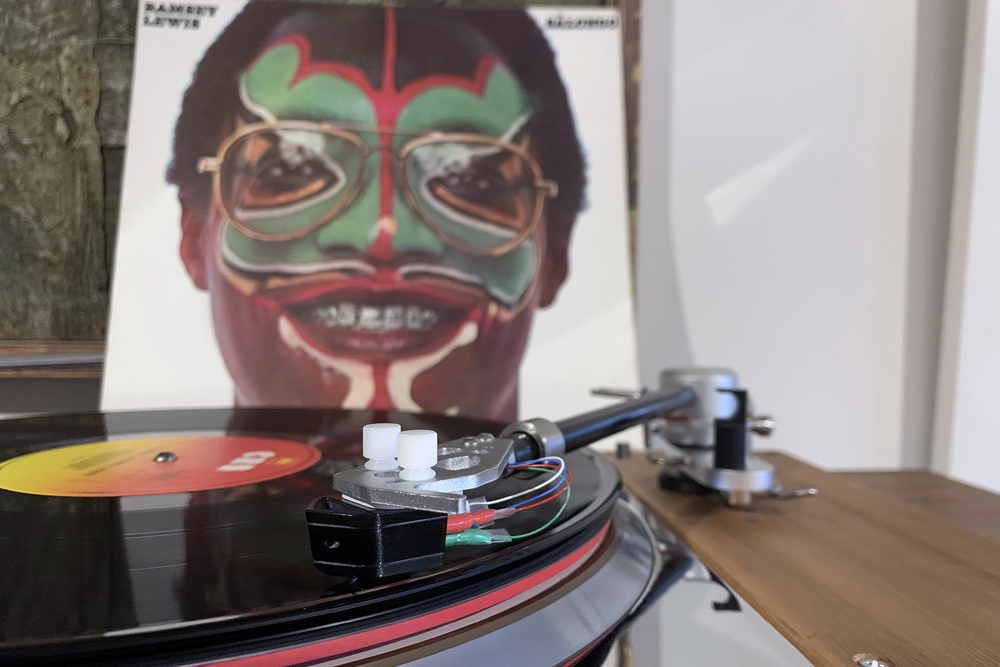
“Graceland” had good lithe pace and dynamics. Woodblocks clapped with a fair amount of realism and can be a good sound to fine tune the tracking force. The Model A did not spit or emphasise the treble and provided oodles of non-fatiguing sound. The third track “I Know What I Know” came across with a very wide sound image easily exceeding the speaker boundaries. Girls on the backing vocals were easy to follow and I could pick out the individual voices. Despite the conical shape, this stylus was giving plenty of detail, with the accordion sounding accurate and musical on “Gumboots” and the bopping snare drums adding to Paul Simon’s studio drenched vocals. The saxophone came on full and throaty without tearing your eardrums out. The rich presentation of “Diamonds On The Soles Of Her Shoes” is well set out with thick bass lines and zest underlying the song. The male backing singers sound rich and full. Paul Simon’s quirky lyrics are clearly laid bare and the studio acoustics are also well presented. A very musical rendition.
As a Sci-Fi fan I could not pass up listening to Star Trek The Motion Picture from 1979. It’s a really well recorded album with plenty of dynamics and stirring passages. “Main Title” starts with the brass and violins laying out the melody which was full and fruity without stridency from the strings or etch from the brass. The soundstage was very wide and filled the room. Next up, “Klingon Battle” mixes orchestral instrumentation with stirringly deep synthesiser bass. Details are present aplenty with metallic screeches zinging across the listening space, which added atmosphere to the bass notes. This recording is second-hand but the Model A stylus was not drawing attention to the minor pops and crackles, instead gliding over the noise and concentrating fully on the music. “The Cloud” comes across with menacing grace, bass is very deep and the percussive section of the orchestra adds plenty of engrossing detail. This is a thrilling listen which the Model A covers very well. “The Enterprise” fills the room with sweet strings with enough detail to keep this listener engrossed. The recording’s dynamic swings offer plenty of midrange and bass action which seem to suit this cartridge well.
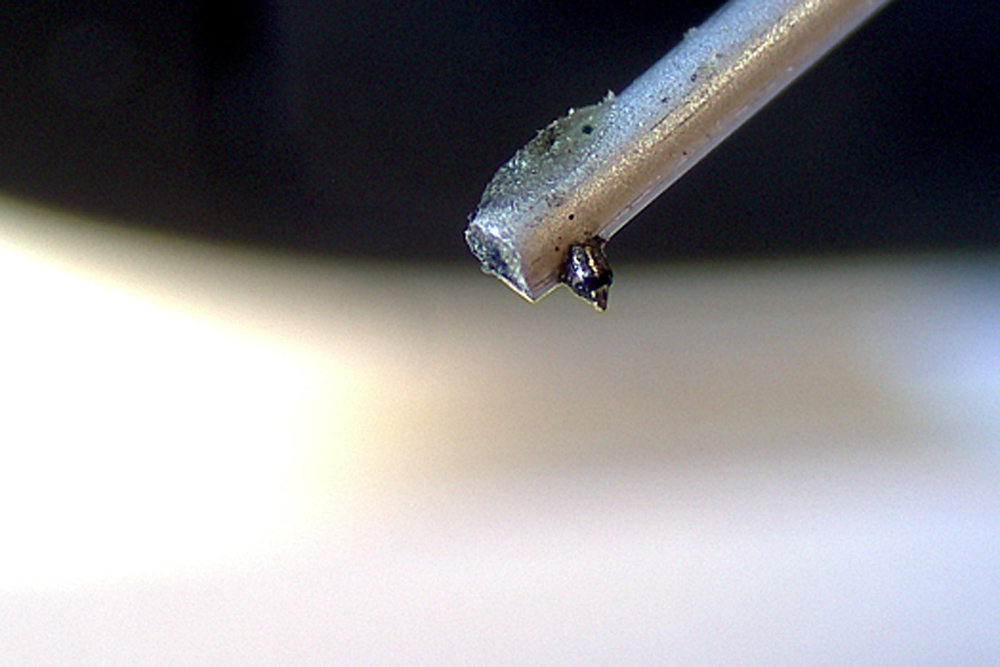
INXS’s album Kick was next on the platter, in order to check-out how the Model A handles this crisp and dynamic recording. “Guns in the Sky” had lots of quick paced drums and guitar chords with an impressive sound image, tall and wide with good dynamics and detail. “New Sensation” had Michael Hutchence’s vocal in the exact centre with the chopping guitar riff on the left. The saxophone came across as clean and full, with plenty of drive and detail but still maintaining sweetness. Some small loss of drum impact was noted on “Devil Inside” but the Model A still pushed the song out with energy and musicality. My listening notes continued to show expressive dynamics, wide soundstage and quick musicality. Some cartridges can sound a bit tame and boring but not the Model A which always had a quick and lively sound.
I have been exploring the albums in my collection from American Jazz musician Ramsey Lewis and for this review I chose his spaced-out funk-psych-jazz album Salongo and focussed on the track “Brazilica”. The track starts with a funky beat laid out by the drums and bass before opening up with brass and wind orchestra. That tends to move the track’s tempo into lounge jazz with overlays of scat style vocals, then morphs back into a funk track, with the soaring saxophone sounding mellifluous and unrestrained. The track flows between lounge and funky jazz with ease and shows the Model A cartridge’s ability to handle anything that is placed under it and played.
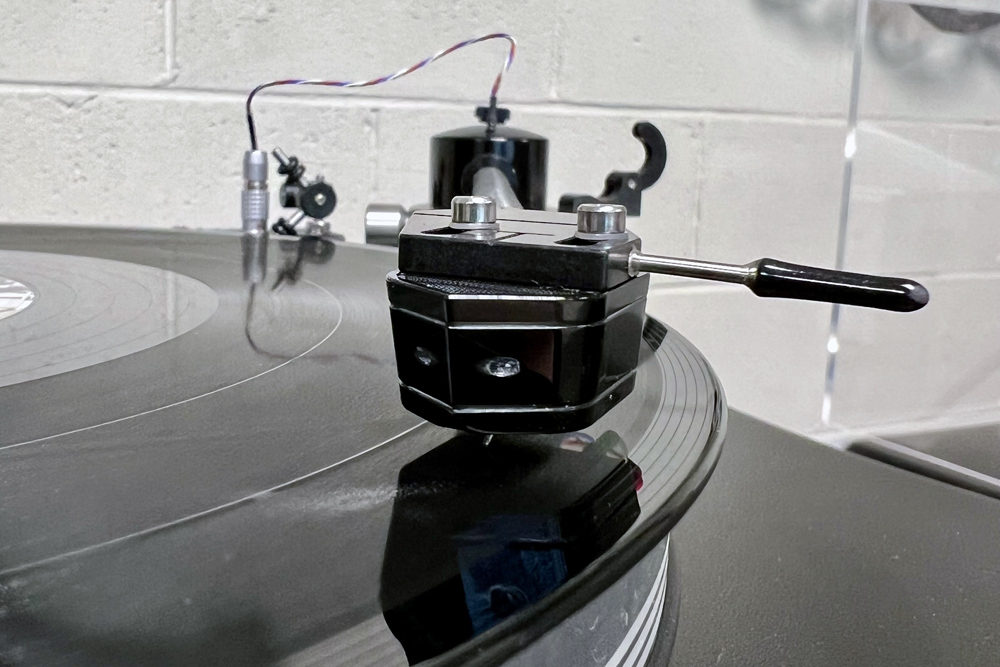
The Model A’s ability to hold back sharp treble does wonders to my Yamaha NS-1000M reference monitor speakers which tend to hold no prisoners with some peaky vinyl cuts. All the music types that I listened to using the Titanic Audio Model A were played with a spacious soundstage, good back to front depth and great speed, alluding to the well thought-out engineering principles in terms of reducing vibrations and preventing unwanted movements from smearing the sound.
Conclusion
In a jewelled and ship-shaped nutshell I really enjoyed my time with the Titanic Audio Model A. I can only imagine how great the other models in the range would sound. The Model A gives more than its fair share of high-end sound. The Model A cartridge sound will certainly have vinyl lovers in raptures due to its non-fatiguing but highly musical sound. It’s easy to setup, when compared to more exotic shaped styli, and the Model A rewards with an engaging, dynamic sound. The models further up in the ship-line should add more rewards with better micro-detail while still retaining the fleetness of the Model A which I so enjoyed.
A wholehearted welcome to Titanic Audio’s new line! And with the Model A, you’re sure to cast off and veer away on a joyous musical voyage…
… Mark Busby
www.soundstageaustralia.com
Associated Equipment
- Speakers – Yamaha NS-1000M, custom 18-inch subwoofer
- Preamplifier – PS Audio BHK, Music First Audio step up transformer, EMIA two-box tube phono stage
- Amplifier – Yamaha B1, Musical Fidelity Tri-Vista 300, Leak Stereo 60, restored Leak Stereo 20
- Sources – Analogue: Technics SP10 mk3 turntable with Stax UA7 Tonearm, Garrard 410 and SME V arm, Thorens TD 124 Mk1 with Woodsong bearing, SME 3012 silver wired tonearm, Music Maker 3 moving iron & DS Audio DS-003 optical cartridges, Tube Sound Audio phono stage, Sansui TU-717 tuner. Digital: Marantz CD-12/DAC-12
- Cables – Vertere Pulse-C, Revelation Audio Labs
Titanic Audio Model A Moving Coil Cartridge
Price: AU$3500
Australian Warranty: Two Years
Australian Distributor: Audio Magic
+61 3 9489 51 22
www.audiomagic.com.au
Titanic Audio
55-59 Adelaide Street
Belfast, BT2 8FE
Northern Ireland
+44 (0) 28 907 26003
www.titanicaudio.co.uk
